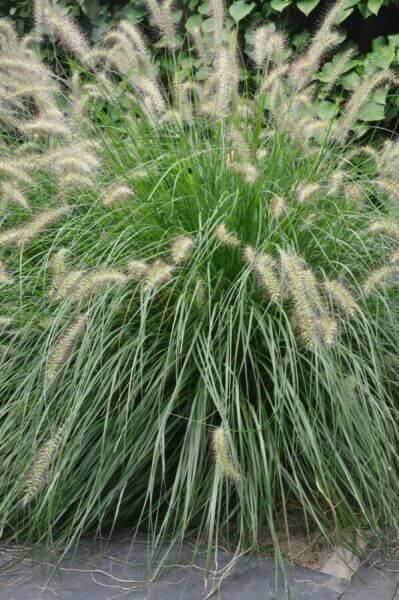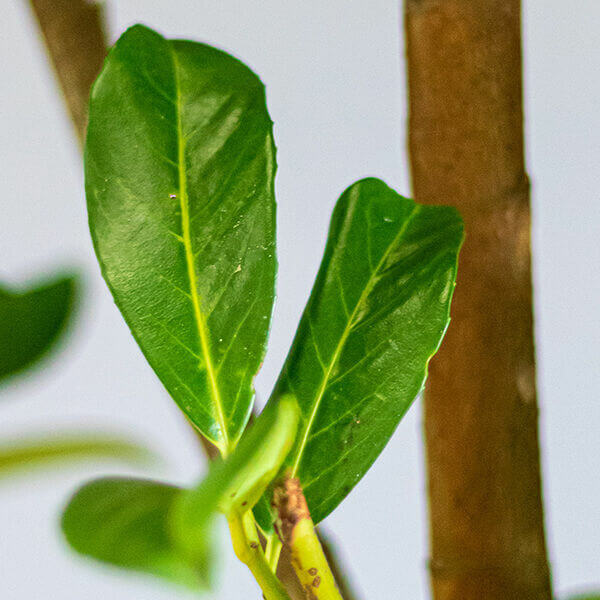Best Hedging Plants For Stylish Gardens
Enhance your garden's appeal with lavish hedge varieties such as Yew (Taxus), Thuja, Laurel, Photinia, and Bamboo, commemorated for their structural integrity and ecological advantages.
Yew and Thuja supply evergreen coverage and winter resilience, while Laurel uses fast development and broad, fragrant leaves.
Photinia includes seasonal charm with its dynamic red foliage, and Bamboo provides a low-maintenance, tranquil ambiance.
These hedges enhance air quality, reduce noise, and develop tranquil, personal spaces.
Appropriate planting, spacing, and upkeep guarantee energetic growth and eco-friendly harmony.
Explore how these lavish ranges can elevate your garden's appeal and well-being.
Key Takeaways
Change Your Garden With Lush Hedge Varieties
- Select Yew for its thick, evergreen development and exceptional durability.
- Choose Laurel for its fast development and broad leaves, making sure quick personal privacy.
- Pick Photinia for its lively seasonal foliage, which turns a striking dark red.
- Make use of Bamboo for a low-maintenance, winter-hardy hedge with aesthetic appeal.
- Space plants 2-3 per meter and prune routinely for optimum development and health.
Popular Hedge Plants
When transforming a garden with lush hedge varieties, it's vital to think about popular hedge plants such as Yew, Thuja, Laurel, and Photinia due to their distinct attributes and advantages.
Yew (Taxus) is extremely respected for its durability and dense, green growth, making it a prime choice for withstanding landscapes.
Thuja is kept in mind for its evergreen foliage and robust winter season durability.
Photinia includes seasonal vibrancy with red leaves that darken gradually, creating dynamic visual appeal.
Laurel offers rapid growth and fragrant, broad leaves, ideal for fast privacy.
In Addition, Bamboo is an exceptional option for atmosphere, using a low-maintenance, winter-hardy choice that improves the garden's aesthetic with its stylish, swaying walking canes.
These selections cater to a range of horticultural requirements and preferences.
Benefits of Garden Hedges
Garden hedges use a multitude of advantages, making them a valuable addition to any landscape. These natural barriers are affordable to implement and supply considerable wind protection, boosting air flow and contributing to noise decrease. The dense foliage of hedges like Thuja and Beech ensures personal privacy by obstructing presence, developing a secluded and peaceful environment.
Hedges also play a crucial function in microclimate guideline, offering a stable environment that cultivates plant growth and minimizes temperature level fluctuations. Their detailed leaf structures filter toxins, improving air quality and adding to a much healthier garden ecosystem.
Additionally, hedges stand out in sound reduction, soaking up and deflecting sound waves to lower ambient sound levels. This double performance of providing both visual and acoustic personal privacy improves the total serenity and visual appeal of any garden.
Planting and Maintenance Tips
For an effective hedge, careful preparation of the planting area is important. Ensure the soil has proper pH and drain to support strong root advancement.
Space the plants appropriately for the picked species. Water the hedge often throughout its preliminary development phase, changing as required with seasonal changes.
Implement a methodical bug control and illness prevention method, utilizing chemical or organic treatments when needed. Frequently inspect for aphids, mites, and fungal infections.
Apply mulch to keep wetness and reduce weeds. Seasonal pruning promotes dense development and air circulation, essential for plant health.
Following these guidelines will help you cultivate a dynamic, properly maintained hedge that enhances the charm of your garden.
Spacing and Cutting Standards
Spacing and Cutting Standards
Proper spacing and trimming are crucial for cultivating healthy, visually appealing hedges. Adequate spacing ensures each plant receives sufficient nutrients, light, and airflow.
Follow these guidelines for optimal hedge maintenance:
- Spacing: Position hedge plants 2-3 plants per meter to encourage robust growth.
- Pruning Techniques: Regular pruning is essential for maintaining desired hedge height and shape. Cut brand-new growth in summer season and cut down older wood throughout winter season.
- Seasonal Care: Change trimming schedules and methods according to seasonal requirements to make sure plant health.
- Hedge Height: Frequently display and cut to preserve the desired hedge height and achieve uniform aesthetic appeals.
Complying with these actions will ensure your hedge flourishes, enhancing both the appeal and performance of your garden.
Selecting the Right Hedge
Selecting the Right Hedge
Choosing the appropriate hedge involves examining elements such as mature height, foliage density, and ecological durability. Successful hedge plant choice requires comprehending each types' growth attributes and site-specific versatility.
For example, Yew (Taxus) uses outstanding longevity and thick growth, while Thuja is significant for its winter strength. Furthermore, considering maintenance requirements is crucial; fast-growing types like Laurel or Privet demand routine trimming, whereas low-maintenance alternatives like Bamboo or Ivy might be preferable for those looking for minimal maintenance.
Ecological elements such as soil type, light availability, and wetness conditions should likewise guide the selection procedure. This careful method makes sure the selected hedges will grow, providing both functional and visual advantages to the garden landscape.
Delivery and Planting Recommendations
To guarantee your hedge plants thrive, they must be provided by specialized couriers and planted quickly upon arrival.
Follow these necessary actions for effective planting:
- Soil Preparation: Improve the soil with raw material to enhance drainage and nutrient content.
- Planting Depth: Develop a trench twice the width and equivalent to the depth of the root ball.
- Watering Techniques: Water thoroughly after planting, keeping the soil consistently wet but not saturated.
- Mulching: Apply a layer of mulch to keep wetness and reduce weeds.
Customer Assistance and Service
Offered the crucial role of timely support in horticultural pursuits, our client assistance team is readily available 6 days a week through telephone, e-mail, and social media to use skilled guidance and quickly attend to any issues. Their commitment to fast action times ensures customer complete satisfaction by fixing questions associated with plant health, ideal planting techniques, and upkeep schedules.

Reaction Time
This detailed support group, reinforced by a stellar 9.3/ 10 customer score, highlights our commitment to improving the gardening experience for every single customer.
Regularly Asked Concerns
The Length Of Time Does It Consider Hedge Plants to Develop?
Hedge plants generally require one to three years to become completely developed, with the precise period varying by species and growing conditions.
Efficient care throughout this critical duration is vital for robust development. Consistent watering, vigilant weed hedge plants control, and appropriate fertilizer application are pivotal in promoting strong root development.
For instance, fast-growing species like Laurel might develop quicker, while slower-growing ranges such as Yew might take longer. Thorough upkeep accelerates the facility process, leading to healthy and dense hedges.
What Are the Finest Hedge Plants for Privacy?
The concern of the finest hedge plants for privacy includes evaluating evergreen and deciduous alternatives.
Evergreen hedges like Thuja, Laurel, and Cypress offer year-round coverage, making sure continuous privacy.
On the other hand, deciduous hedges such as Beech provide seasonal privacy, shedding leaves in colder months.
Secret maintenance suggestions for personal privacy hedges consist of regular cutting, fertilizing in spring, and appropriate spacing-- generally 2 to 3 plants per meter.
In addition, constant watering and diligent weed elimination are crucial for promoting healthy, thick development.
Can Hedge Plants Attract Wildlife to My Garden?
Yes, hedge plants can bring in wildlife to your garden by offering essential advantages like shelter, food, and nesting sites, therefore improving local biodiversity. For instance, yew, holly, and laurel are outstanding for attracting birds, while ivy supports a range of insects.
Nevertheless, it is necessary to keep in mind that there are some drawbacks, such as increased maintenance to handle pests and routine upkeep. Thoroughly picking and preserving hedge ranges can help balance these drawbacks and benefits, eventually fostering a lively and sustainable community in your garden.
Exist Any Flowering Hedge Plants Available?
Yes, there are flowering hedge plants offered that can improve the charm of your garden.
For instance, Elaeagnus, also understood as Olive Willow, produces aromatic white flowers in the fall, including a touch of sophistication.
Photinia, another popular choice, showcases dynamic red leaves that develop into a rich green, developing a vibrant visual impact throughout the seasons.
To guarantee these plants flourish, it's vital to practice appropriate pruning techniques and seasonal upkeep, such as cutting brand-new growth in the summer and cutting back in the winter.
These procedures will assist preserve the health and aesthetic appeal of your blooming hedges.
How Do I Prevent Pests in My Hedge Plants?
To avoid insects in hedge plants, employ natural bug control approaches and preserve appropriate hedge care. Present helpful pests like ladybugs, which prey on hazardous bugs, to develop a well balanced community.
Frequently check your hedges for indications of problem and quickly remove any affected parts to prevent the spread. Ensure the health of your hedges by applying balanced fertilizers and supplying appropriate water.
Make use of mulching to keep soil wetness and appropriate spacing to decrease plant stress and promote robust growth. These practices jointly assist in decreasing bug problems and preserving a healthy hedge.
Conclusion
In essence, choosing the right hedge ranges such as Yew, Thuja, and Laurel can change any garden into a peaceful haven. These plants supply year-round plant, improve aesthetic appeal, and deal useful benefits like sound decrease and wind protection.
Proper planting methods, accurate spacing, consistent watering, and seasonal cutting are crucial for ideal growth.
Dependable shipment services and professional customer assistance guarantee a seamless experience from purchase to planting, making it easier than ever to elevate your outside space.
Garden hedges use a wide variety of benefits, making them a valuable addition to any landscape. These natural barriers are economical to implement and supply considerable wind defense, improving air flow and contributing to noise decrease. The dense foliage of hedges like Thuja and Beech ensures privacy by blocking presence, producing a remote and serene environment.

Pruning Techniques: Routine pruning is necessary for preserving desired hedge height and shape. Cut brand-new development in summer and cut back older wood throughout winter season.
Comments on “Best Hedging Plants For Rooftop Gardens”